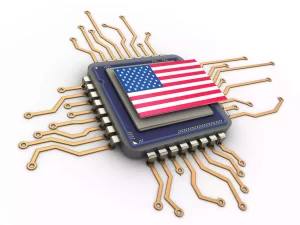Introduction
Training robots to perform various tasks efficiently has long been a challenge due to the diverse nature of datasets and environments. However, MIT researchers have developed a groundbreaking technique called Policy Composition (PoCo) to address this issue, revolutionizing the field of MIT Develops Breakthrough Technique for Training Multipurpose Robots
With policy composition, researchers are able to combine datasets from multiple sources so they can teach a robot to effectively use a wide range of tools, like a hammer, screwdriver, or this spatula.
Here’s a breakdown of the breakthrough:
Challenge: Training robots on a vast amount of data from diverse sources (simulations, real-world demos) with varying formats (images, touch data) and purposes (distinguishing objects, navigating) is difficult. Current methods often use limited, task-specific data, hindering the robot’s ability to adapt to new situations.
MIT’s Solution: A novel technique called Policy Composition (PoCo) that utilizes generative AI models known as diffusion models. These models are trained on separate datasets, each teaching the robot a specific task using a particular data format. PoCo then merges these learned skills into a universal policy, enabling the robot to perform multiple tasks across different environments.
Benefits: Robots trained with PoCo exhibit a significant improvement in performance (20% increase) on various tool-use tasks. They can also adapt to new tasks that weren’t included in their initial training.
This breakthrough paves the way for the development of more versatile robots that can be seamlessly integrated into our lives, potentially taking on a wider range of domestic and industrial tasks.
Background of MIT Robots:
Robotic datasets often vary widely in modality, capturing data from different sources such as color images, tactile imprints, simulations, and human demonstrations.
Traditional machine-learning models struggle to incorporate such diverse data, leading to limited adaptability and performance in robots.
This limitation has hindered the development of multipurpose robots capable of performing a wide range of tasks in various environments.
Read More:IBM and Pasqal Forge Open-Source Path to Build Practical Quantum Supercomputers. – techovedas
Enhancing Robot Training
MIT researchers have devised PoCo to train robots effectively using multiple sources of data across different domains, modalities, and tasks.
By leveraging generative AI known as diffusion models, PoCo combines policies learned from various datasets into a general policy, enabling robots to perform multiple tasks in diverse settings.
This approach allows robots to learn from a wide range of experiences, improving their adaptability and versatility.
Read More: Upto 22% : Top 5 Semiconductor Equipment Makers Sales Surge in Q1 2024 – techovedas
Overcoming Data Challenges
Existing robotic datasets often focus on specific tasks and environments, limiting a robot’s ability to perform new tasks in unfamiliar settings.
PoCo aims to overcome this limitation by incorporating diverse datasets to train robots for multipurpose use.
By synthesizing data from different sources, PoCo provides robots with a broader understanding of tasks and environments, enabling them to generalize their learning and perform effectively in various scenarios.
The Mechanics of PoCo
In PoCo, researchers train separate diffusion models with different datasets, such as human video demonstrations and teleoperation of robotic arms.
Each diffusion model learns a policy for completing a specific task, capturing the nuances and intricacies of that task. These policies are then combined and refined to create a general policy that guides the robot in performing various tasks.
By integrating policies from different datasets, PoCo creates a unified framework for robot training that enhances performance and adaptability.
Advantages of PoCo
One of the key benefits of PoCo is its ability to combine policies from different datasets, allowing robots to achieve better performance by leveraging the strengths of each dataset.
This approach enhances a robot’s adaptability and dexterity, leading to improved task performance.
Additionally, PoCo enables robots to learn from a diverse range of experiences, making them more versatile and capable in real-world applications.
Read More: Rapidus and IBM Collaborate for Chiplet Packaging for 2nm Process Node – techovedas
Real-world Applications
PoCo has been tested in simulations and real-world experiments, where robots successfully performed multiple tool-use tasks, such as using a hammer and wrench.
PoCo led to a 20 percent improvement in task performance compared to baseline methods, demonstrating its effectiveness in enhancing robot training and performance.
These results have significant implications for various industries, including manufacturing, healthcare, and logistics, where multipurpose robots can streamline operations and increase efficiency.
“One of the benefits of this approach is that we can combine policies to get the best of both worlds. For instance, a policy trained on real-world data might be able to achieve more dexterity, while a policy trained on simulation might be able to achieve more generalization,”
Wang says.
Future Directions
The researchers plan to apply PoCo to long-horizon tasks, where robots must perform sequential actions using different tools.
They also aim to incorporate larger robotics datasets to further enhance performance and scalability.
By refining and expanding PoCo, MIT researchers pave the way for advanced robotics systems. These systems can adapt to dynamic environments and perform complex tasks with ease. This work promises significant advancements in robotics technology.
Read More: Expedera Opens Sixth Global R&D Center in Hyderabad, India: Implications – techovedas
Funding and Collaborators
This research is supported by funding from Amazon, the Singapore Defense Science and Technology Agency, the U.S. National Science Foundation, and the Toyota Research Institute.
The study involves collaboration among MIT researchers. They come from Electrical Engineering and Computer Science, Mechanical Engineering, Aeronautics and Astronautics, and Brain and Cognitive Sciences. This interdisciplinary effort enhances the study’s impact.
Follow us on Twitter: https://x.com/TechoVedas
Conclusion
By leveraging diverse datasets and generative AI, PoCo enables robots to adapt to various tasks and environments.
This paves the way for more versatile and efficient robotics systems. As robotics technology evolves, PoCo offers a promising approach.
It helps overcome data challenges and unlocks the full potential of multipurpose of MIT robots in various industries.








